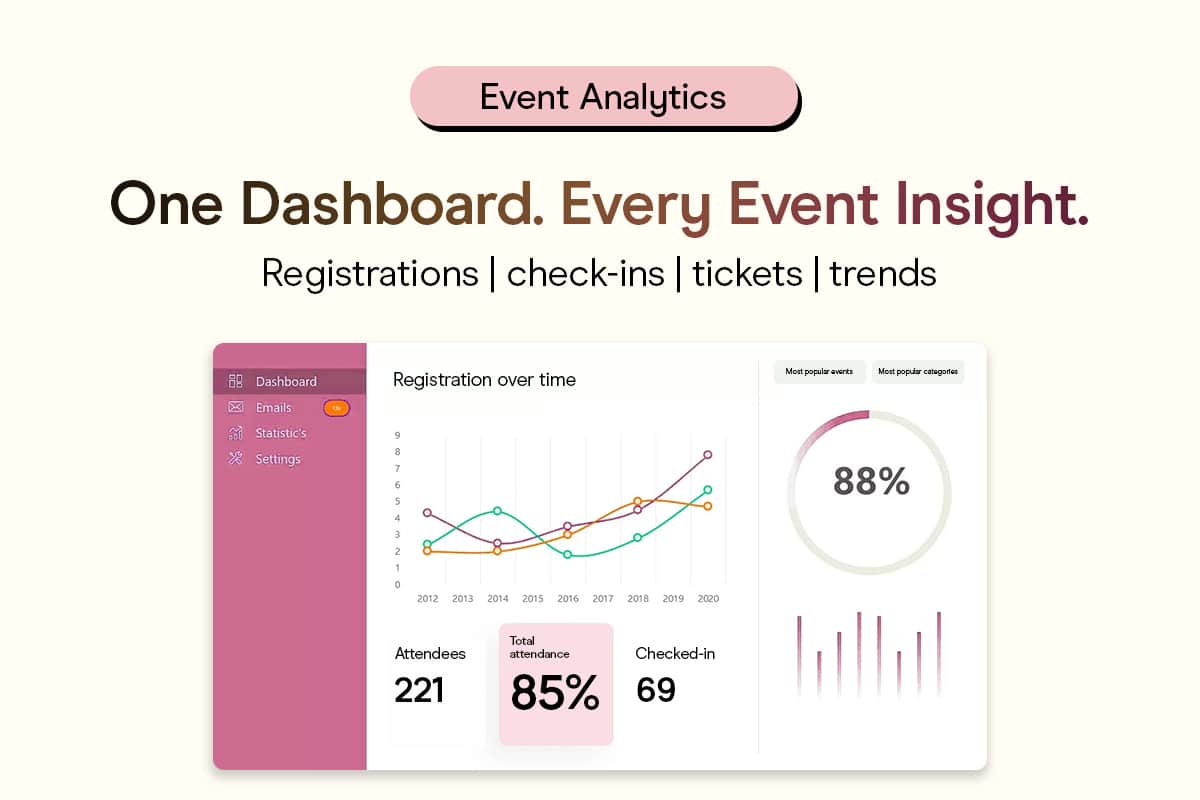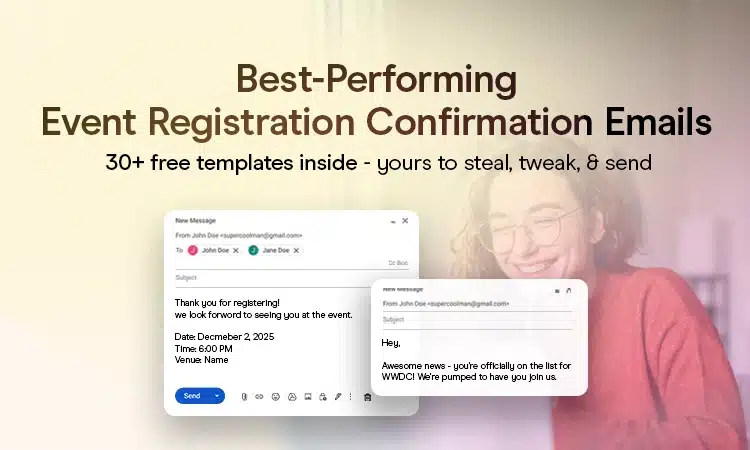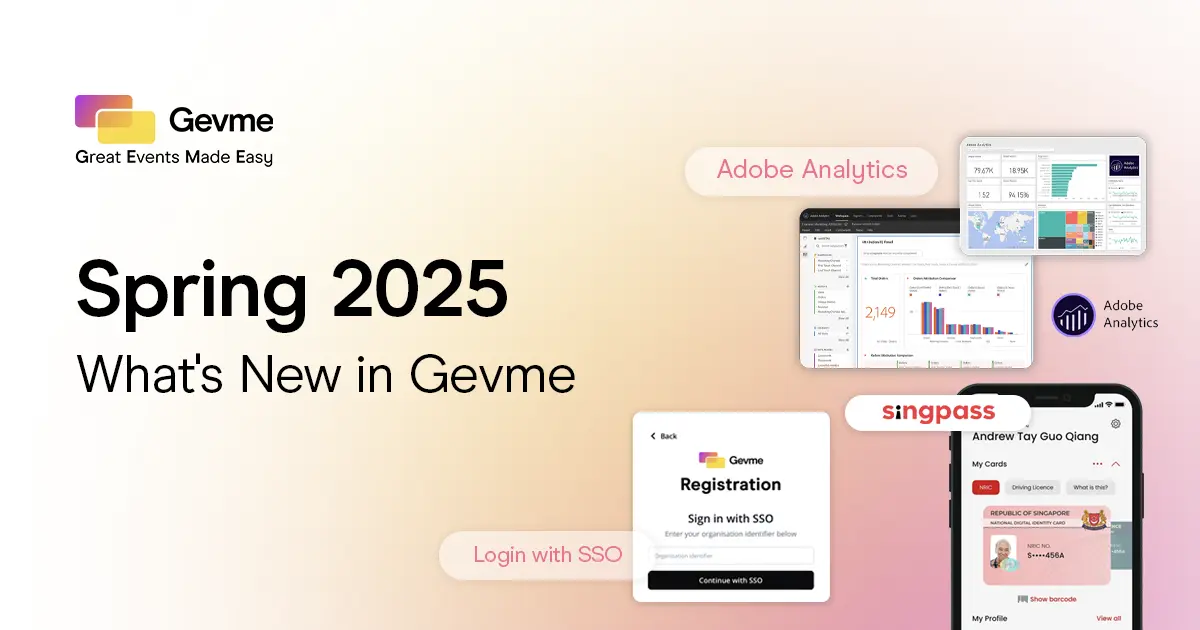Picture this: you’ve meticulously planned every detail of your event, from securing top-notch speakers to arranging engaging sessions. Yet, despite your efforts, potential attendees abandon the registration process midway. This scenario is more common than you might think. Studies indicate that a significant percentage of users abandon online forms due to factors like complexity and unnecessary fields. Understanding and addressing these event registration problems is crucial to ensure a seamless experience and maximize attendance.
Identifying Common Event Registration Pain Points
1. Overcomplicated Registration Forms
Lengthy and intricate registration forms is one of the most common event registration problems that can deter potential attendees. When faced with excessive fields requesting non-essential information, users may feel overwhelmed and opt out before completion. For instance, asking for detailed personal preferences or extensive demographic data can be off-putting, leading to increased abandonment rates.
2. Technical Glitches and Website Downtime
Technical issues such as slow-loading pages, system crashes, or errors during the registration process can frustrate users and lead to drop-offs. Ensuring that the registration platform is robust and capable of handling high traffic volumes, especially during peak registration periods, is vital. Implementing load testing and utilizing scalable cloud infrastructure can help prevent these issues.
3. Lack of Mobile Optimization
In today’s digital landscape, a significant portion of users access registration forms via mobile devices. When these forms aren’t optimized for mobile use, they can appear misaligned, require excessive scrolling, or be difficult to navigate, leading to frustration and potential drop-offs. Ensuring that registration pages are responsive and user-friendly across various devices is essential to accommodate the growing number of mobile registrants.
4. Unclear Pricing and Hidden Fees
Transparency in pricing is crucial during the registration process. Unexpected costs or hidden fees that appear late in the registration can lead to cart abandonment and diminish trust in the event organizer. Clearly displaying all costs upfront, including any additional fees, helps build trust and reduces the likelihood of attendees abandoning the registration due to unforeseen expenses.
5. Insufficient Payment Options
Offering limited payment methods is another event registration problem that can restrict attendee convenience and deter potential registrants. Providing multiple payment options, such as credit cards, PayPal, and other digital wallets, caters to diverse preferences and can enhance completion rates. Ensuring that the payment process is secure and straightforward further encourages attendees to finalize their registration without hesitation.
Strategies to Overcome Registration Challenges
1. Simple Registration Forms
Lengthy and complex registration forms can deter potential attendees. To enhance user experience and reduce abandonment rates, limit the number of fields to essential information. For instance, asking only for name, email, and payment details during initial registration can streamline the process. Additional information can be collected later via follow-up communications. Implementing clear, concise labels and grouping related fields together also contribute to a more intuitive form.
2. Ensure Technical Robustness
Technical issues such as slow-loading pages, system crashes, or errors during the registration process can frustrate users and lead to drop-offs. To prevent these issues, invest in reliable event registration software with a proven track record and positive user reviews. Regularly update and test the platform to maintain optimal performance. Additionally, ensure the system is optimized for mobile devices, as a significant number of users access registration forms via smartphones and tablets.
3. Optimize for Mobile Users
With a significant number of users accessing registration forms via mobile devices, it’s essential to ensure that your forms are mobile-friendly. A responsive design that adapts to various screen sizes enhances accessibility and user satisfaction. Implementing touch-friendly buttons, readable fonts, and properly spaced input fields can significantly improve the mobile registration experience. By focusing on mobile-friendly practices, you can reduce drop-offs and improve data accuracy.
4. Provide Transparent Pricing
Unexpected costs or hidden fees during the registration process can lead to cart abandonment and diminish trust in your event. Clearly displaying all costs upfront, including any additional fees, builds trust and reduces the likelihood of attendees abandoning the registration due to unforeseen expenses. Transparency in pricing helps manage attendee expectations and prevents confusion or frustration during the registration process.
5. Offer Diverse Payment Options
Limiting payment methods can restrict attendee convenience and deter potential registrants. Integrating multiple payment gateways that support various options, such as credit cards, PayPal, and other digital wallets, caters to diverse preferences and can enhance completion rates. Ensuring that the payment process is secure and straightforward further encourages attendees to finalize their registration without hesitation.
By implementing these strategies, event organizers can create a more efficient and user-friendly registration process, addressing common event registration pain points and enhancing the overall attendee experience.
Expert Insights on Enhancing Event Registration
A seamless event registration process is pivotal for maximizing attendee engagement and satisfaction. Industry experts emphasize several best practices to avoid event registration problems.
Prioritize User Experience
Matt Allen, an event technology expert at CrowdComms, underscores the importance of user-centric design in registration forms:
“User experience should be at the forefront of your event registration software’s capabilities. A form that’s intuitive and easy to navigate encourages completions.”
Simplifying the registration process by minimizing required fields and ensuring logical flow can significantly reduce major event registration problems.
Maintain Branding Continuity
Consistent branding throughout the registration platform reinforces trust and recognition. Allen advises:
“Maintaining branding continuity across all registration platforms is crucial. Consistent design and messaging prevent attendee confusion and build trust throughout the registration journey.”
Aligning the registration page’s aesthetics with the event’s overall branding ensures a cohesive experience.
Implement Mobile Optimization
With a significant number of users accessing registration forms via mobile devices, mobile optimization is essential. A study by CrowdComms highlights that flexible, intuitive registration processes set the tone for the entire event. Ensuring that registration pages are responsive and user-friendly across various devices accommodates the growing number of mobile registrants.
Integrate with CRM Systems
Integrating registration platforms with Customer Relationship Management (CRM) systems streamlines data collection and enhances communication strategies. Allen notes:
“Leveraging CRM integrations allows for personalized communication and efficient data management, enhancing the overall attendee experience.”
This integration enables organizers to tailor interactions based on attendee data, fostering a more personalized experience.
Case Study: Etherio Group’s Streamlined Registration
The Etherio Group faced challenges in managing multiple attendee types and complex registration processes for their events. By leveraging an all-in-one event management platform, they achieved seamless branding, efficient onsite attendance tracking, and streamlined assignment of individuals to seats and teams. This approach not only enhanced the attendee experience but also saved countless hours of administrative time.
By implementing these expert-recommended strategies, event organizers can create a more efficient and user-friendly registration process, addressing common event registration pain points and enhancing overall attendee satisfaction.
Leveraging Technology for Seamless Registration
Incorporating advanced technology into event registration can significantly enhance efficiency and attendee satisfaction. Modern solutions offer features such as automated confirmations, real-time analytics, and secure payment processing, streamlining the entire registration experience. For instance, platforms like Gevme provide comprehensive tools that automate tasks, reducing manual errors and saving time for event organizers.
Implementing such technologies not only simplifies the registration process but also provides valuable insights into attendee behavior, enabling organizers to tailor future events more effectively. By embracing these innovations, event planners can create a more engaging and hassle-free experience for participants.
Ready to enhance your event registration process? Discover how Gevme’s comprehensive solutions can help you create seamless and efficient registration experiences for your attendees.








